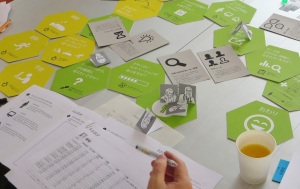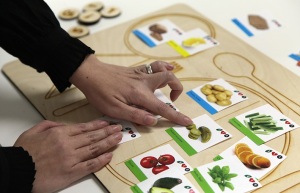Designing for sustainability: fostering reflection in the design process
In this paper, Durall et al. focus on the strong links between experience and reflection [1, 2] and provide a method, through two case studies, that can be used in experience centred design to explore user’s reflections.
With a clear focus on sustainability, the authors outline the difficulty we can have in reflecting on our experiences explaining that we only consider what has happened rather than what will or could happen in the future. As part of the framing of this paper, Durall et al. show that to design products that are sustainable, we need to consider our reflections and experiences so we can design for future considerations:
“designs that support sustainability should not only be the result of reflection, but also offer opportunities for reflection”
Both case studies presented in the paper had developed a prototype and used game design as a method for reflection to draw on user’s experiences for future iterations of the designs.


The games were used in different ways for each case study but included a focus group setting as well as a workshop setting. The games were specifically designed for the artefacts and prototypes they were about and aimed to make users reflect on their use of the prototype, reflect on their own behaviour and whether they had modified their behaviour as a result. In some cases, the games were used to obtain design ideas in the form of sketches or highlight positive and negative aspects of the prototypes.
The paper presented an interesting method and one which I have not looked into previously. I have a huge interest in participatory methods and processes so I was quite taken with their ideas for games that support meaningful reflections. Using experiences in the design process is hugely valuable and this particular method seems to support that view. However, the paper’s focus was to argue for the use of game design as a tool for reflection and, consequently, the paper did not show how those experiences were actually carried forward into future iterations of the prototypes. Although beyond the scope of this paper, without mentioning how views were used more specifically, it is difficult to fully understand and appreciate the method and process – even as an advocate of participatory methods.
[1] Durall, E., Uppa, H., & Leinonen, T. (2015). DESIGNING FOR SUSTAINABILITY: FOSTERING REFLECTION IN THE DESIGN PROCESS.Nordes, 1(6).
[2] Dalsgaard, P. (2008, February). Designing for inquisitive use. In Proceedings of the 7th ACM conference on Designing interactive systems (pp. 21-30). ACM.
Leave a Reply Cancel reply
You must be logged in to post a comment.